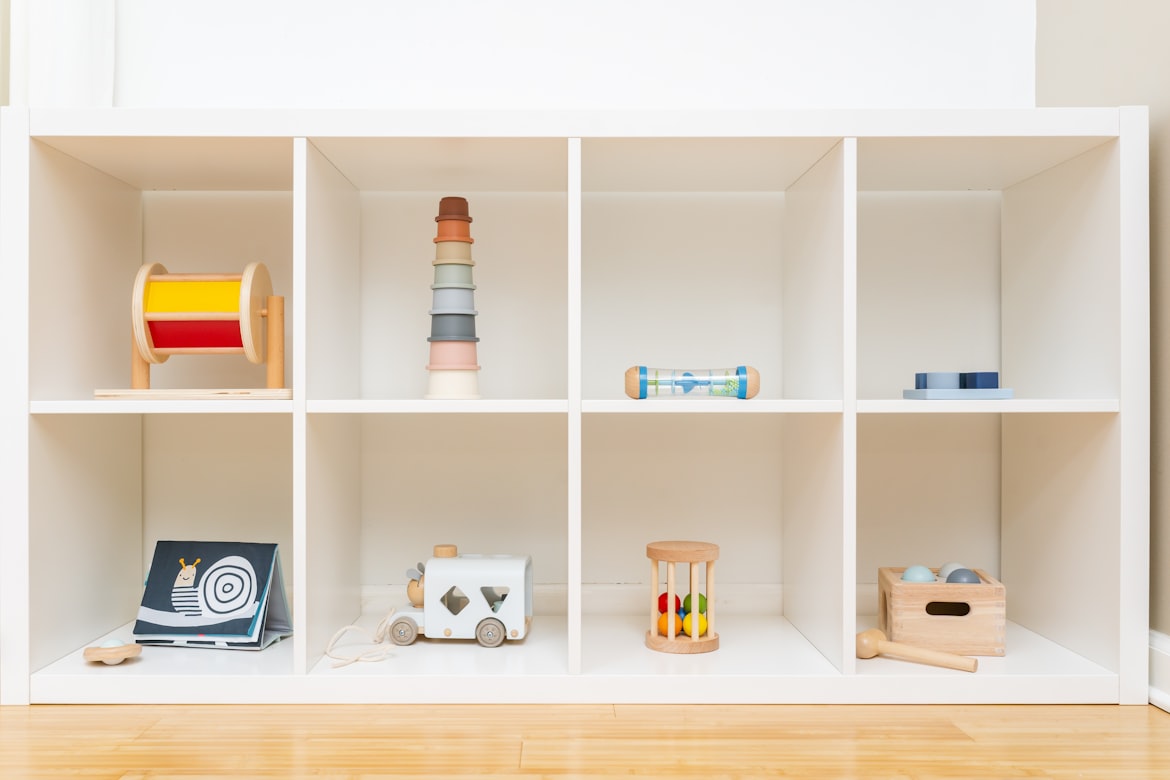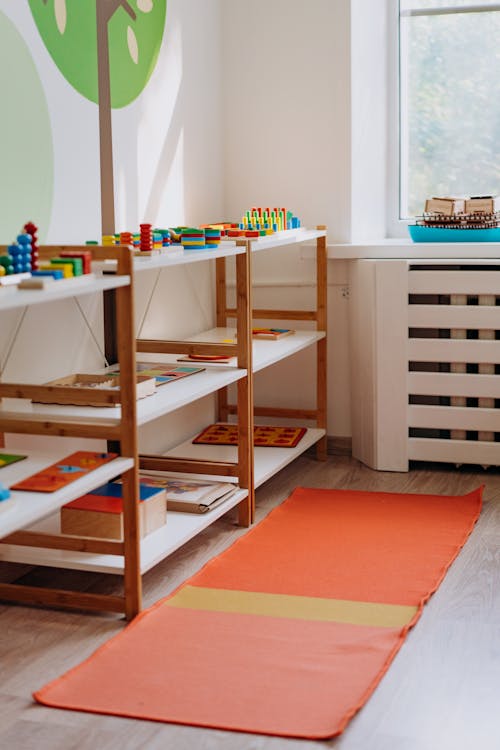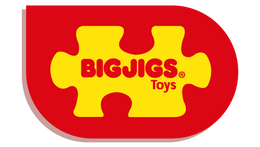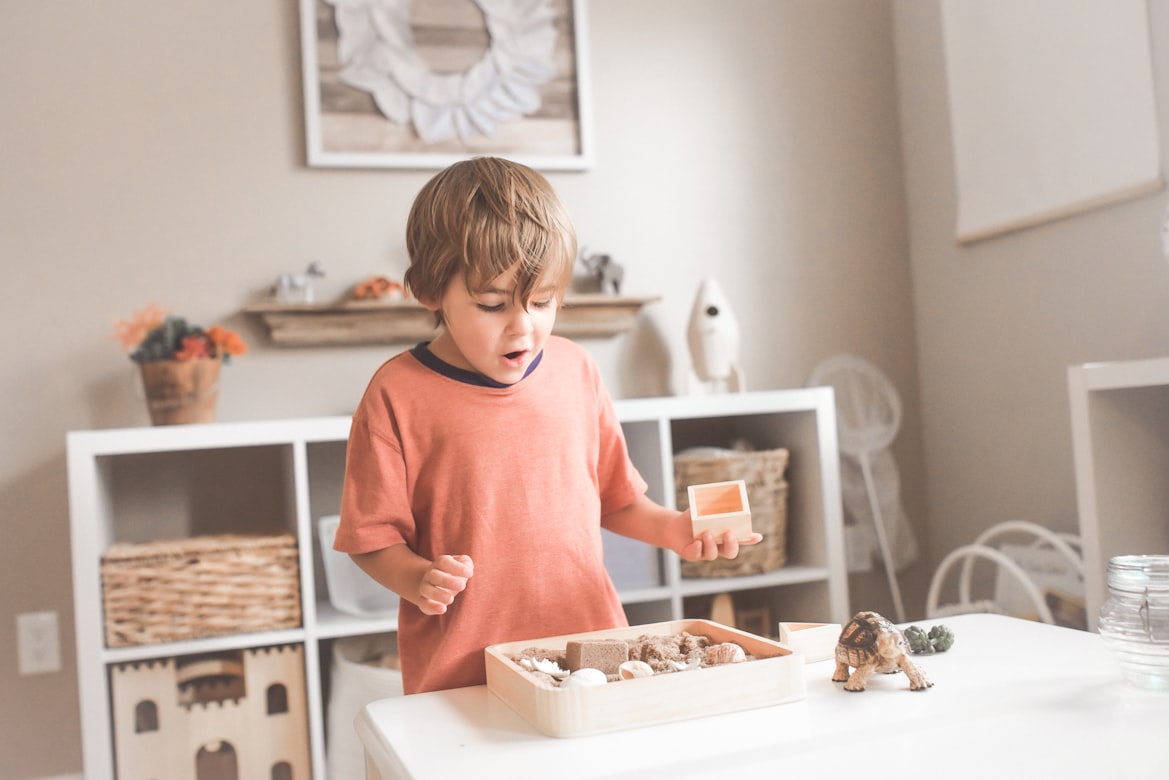
What Is Toy Rotation And How To Do It
Is your toddler growing tired of their toys? Rethink your approach and give toy rotation a go. Inspired by Montessori parenting styles, toy rotation is a superb way to combat toy boredom and motivate deeper, more meaningful play.
Toy Rotation For Toddlers: What? Why? When? How?
Research suggests that having too many toys can overwhelm young minds and hinder their creativity, imagination and concentration skills. Toy overload can actually have the reverse effect in making our kids bored and uninterested in their playthings, so less is more!
Toy rotation is a hot topic right now, so we felt it was a good idea to take a closer look at this popular Montessori method to find out what it’s all about and help you decide if it’s right for you.
How does toy rotation work?
Toy rotation is very simple. All you have to do is arrange a handful of toys on a low shelf that your toddler can reach (cube storage units are great for this), then stash the rest of their toys in a cupboard out of sight. When you feel a refresh is needed, just switch the toys for a few of the ones you had previously stored away.

What are the benefits of rotating toys?
Toy rotation benefits for kids:
- Fosters independent thinking and choice-making
- Avoids overstimulation
- Enhances focus and concentration
- Improves quality of play
- Boosts creativity and imagination
- Reduces boredom
- Keeps things new and exciting!
Toy rotation benefits for parents:
- Cuts out clutter
- Clean-ups are easier and quicker
- Reduces frustration caused by mess
- Creates more space
- Saves the pennies, as old toys they’ve forgotten about will feel new again when brought out!
What are some toy rotation categories?
The idea is to give your kids a choice of toys that offer different types of play. Your toy rotation categories could include sensory toys, construction toys, stacking toys, pretend play sets, musical or percussion instruments, puzzles, soft toys and arts & crafts.

That said, there’s no need to complicate things, so don’t stress about the categories too much. As long as you have a varied selection of toys each time that’ll be great. Our award-winning Simply Scandi Range is full of beautifully crafted wooden toys that’ll look gorgeous on your toy rotation shelf.
How many toys should you have out for toy rotation?
We’ve tried it a few ways but found that around 10 toys are ideal for toy rotation. This is enough to give kids a mixture of playthings to choose from, but not so much that it’ll overwhelm them.
How often should you rotate toys?
There are no strict rules here, but on average rotating toys every 1-2 weeks tends to work well. Doing it on a Friday can help to give you a more relaxed weekend (here's hoping!), as they’ll have a bunch of ‘new’ toys to play with. You don’t have to swap out every toy either. Keep an eye on what they’re playing with most and just replace the toys that aren’t captivating them.

What age is toy rotation for?
The ideal time to start toy rotation is less about age and more about your baby’s interest in playing. It works well when your tot can crawl and reach for their toys, and even better when they hit toddlerhood (from 12 months) and their engagement in play ramps up. But toy rotation is beneficial whatever age you choose to start, as it's a great way to keep their toys organised and offers youngsters variety without it becoming too much.
Toy Rotation In 5 Easy Steps
1. Declutter: Sort through all the toys you have and donate the ones your child has outgrown.
2. Categorise: Get yourself a few large storage boxes, sort them into specific categories (such as sensory toys, soft toys, crafts and so on), then store the toys you’re keeping in the relevant boxes.
3. Display: Pick a couple of toys from each box and place them onto your shelving unit (TIP: toddlers tend to find toys like puzzles and ring stackers more interesting when they’re left ‘unfinished’ and ready for them to play with).
4. Hide: Put the rest of the toys (inside their categorised boxes) in a storage cupboard away from your little munchkin’s beady eyes!
5. Rotate: Swap out toys they’re not so fussed about every 1-2 weeks, or when you feel the time is right.
Share Your Montessori Playroom Snaps

We’d love to see photos of your own toy rotation themes, so tag us on Instagram @bigjigstoys and let us know how it’s going!

